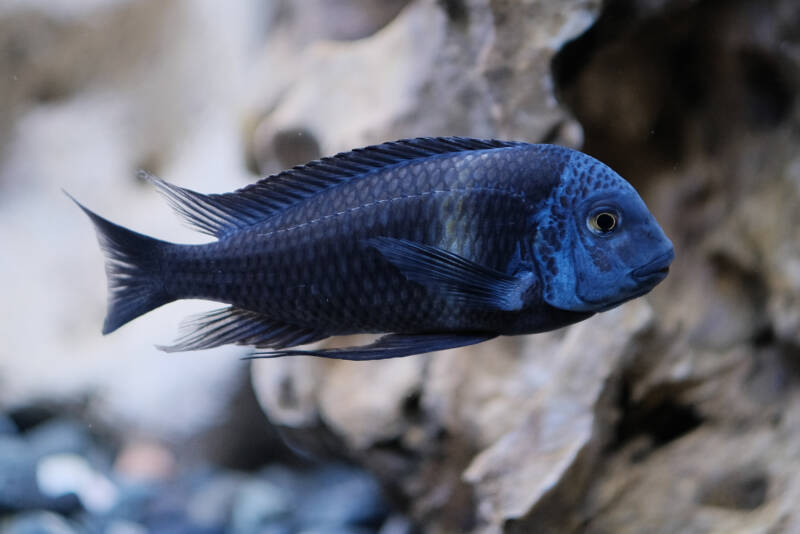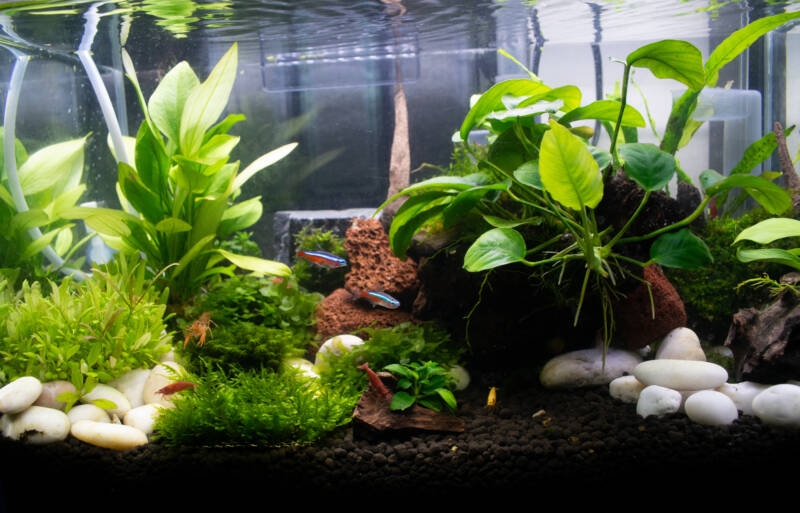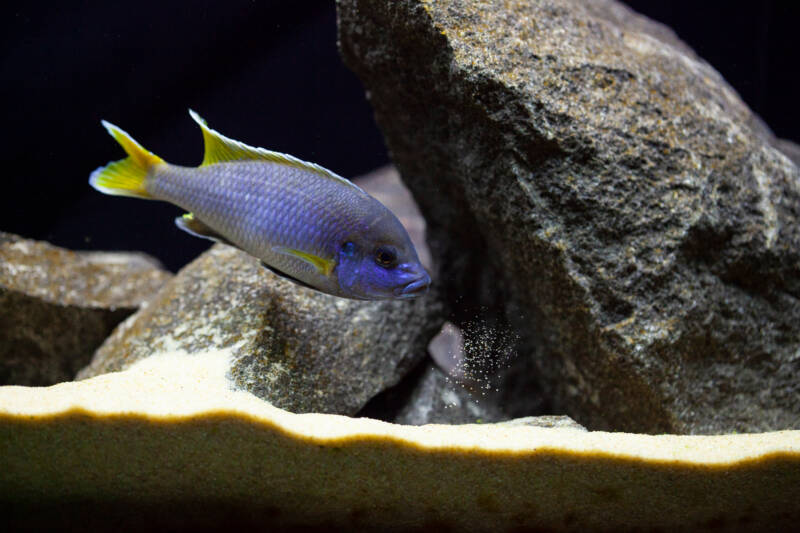Everyone knows Chlorine to Dissipate is harmful to aquarium fish. It must be removed from tap water, or you’ll harm or kill your fish, invertebrates, and other aquatic life.

Some aquarists wonder what happens to chlorinated water if it sits for a while. Does the chlorine go away all by itself? The answer is “maybe.”
We’ll explain that later. But first, it is helpful to understand more about chlorine.
[toc]
Why is There Chlorine in My Tap Water?
Public water systems often add chlorine to the water supply to kill harmful pathogens like bacteria, viruses, and parasites. This disinfection process helps prevent diseases caused by microorganisms.
As chlorine travels through pipes to your home, some of it gets used up. The remaining residual chlorine protects against potential contamination from leaks or pipe repairs. While this residual chlorine keeps tap water safe, you must remove it before adding the water to your aquarium.
Types of Chlorine Disinfectants
Water treatment systems use several types of chlorine disinfectants:
1. Chlorine
Chlorine was the most common disinfectant for many years. Workers add it to water as bleach or bubble it in as a gas. While effective, chlorine reacts with organic matter in water, forming harmful byproducts. Many systems have switched to chloramine.
2. Chloramine
Chloramine combines chlorine and ammonia. It doesn’t react with organic matter, so it avoids creating carcinogens. However, it requires a higher dose and is toxic to fish and invertebrates.
3. Chlorine Dioxide
This chlorine-based disinfectant kills bacteria and pathogens without forming harmful byproducts. Despite its benefits, it remains harmful to aquatic life.
How Do I Know if My Water is Chlorinated?

If you use municipal water, it likely contains chlorine. Federal regulations limit chlorine and chloramine to 4 ppm and chlorine dioxide to 0.8 ppm.
Can I Taste or Smell Chlorine?
Yes, many people detect chlorine in their water. However, relying on taste or smell isn’t reliable. You need to test the water to be sure.
How to Test Chlorine Levels
Use a chlorine test strip designed for aquariums. Pool test kits aren’t sensitive enough and may miss trace amounts of chlorine.
Removing Chlorine to Dissipate from Tap Water

In the past, aquarists would “age” tap water by letting it sit for a week or more. This method worked for regular chlorine, as it naturally dissipates over time. Heating and aerating the water sped up the process.
How Long Does It Take for Chlorine to Dissipate?
It depends on the chlorine level and conditions. Warming the water and using an aerator can help. Indoors, it may take 2-3 days. Always test the water to confirm.
Do All Chlorine Disinfectants Chlorine to Dissipate
Regular chlorine dissipate in 2-3 days, but chloramine is more stable and can take weeks. Chlorine to Dissipate dioxide also takes longer to break down. For these, aging water isn’t practical.
Aquarium Water Conditioners and Chlorine to Dissipate
Modern water conditioners instantly neutralize chlorine disinfectants, making tap water safe for your aquarium immediately. Follow the product instructions for best results.
Ascorbic Acid
Some aquarists use ascorbic acid powder to neutralize chlorine. However, this synthetic chemical offers no advantage over standard water conditioners and requires precise dosing.
Activated Carbon Filtration
Activated carbon reacts with chlorine, neutralizing it. Faucet filters or standalone carbon filters make tap water safe for aquariums instantly.
Reverse Osmosis Filtration
Reverse osmosis (RO) systems are popular for reef and freshwater aquariums. However, chlorine disinfectants can damage RO membranes. Most systems include an activated carbon pre-filter to neutralize chlorine before it reaches the membrane.
Final Thoughts
Modern water conditioners make it easy to prepare tap water for your aquarium. You don’t need to worry about chlorine, chloramine, or chlorine dioxide. Simply use a water conditioner, and your water will be safe for your aquatic pets.
If you have questions or comments, leave them below!
